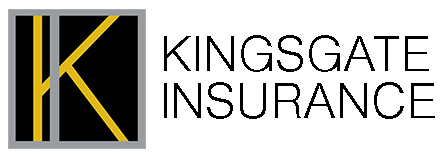Understanding Common CGL Policy Exclusions
Commercial general liability (CGL) insurance is an essential form of coverage for any organization. Such a policy can provide much-needed financial protection if an organization is held liable for injuring third parties or damaging their property amid nonprofessional negligent acts or in the course of its usual business operations. This type of insurance may also cover instances in which an organization is held responsible for causing personal and advertising injuries. When these incidents occur, CGL coverage can help reimburse various expenses incurred by the impacted organization, including legal defense costs and compensatory and punitive damages. Although CGL insurance applies to a broad range of events, it still comes with certain limitations. Specific coverage offerings vary between insurers, but certain portions of a typical CGL policy—known as coverage A and B—include some common exclusions. These exclusions generally arise from an incident or form of damage either being uninsurable or covered by a different commercial insurance policy.
With this in mind, it’s imperative for organizations to be aware of these exclusions and gain a better understanding of their overall coverage capabilities. In doing so, organizations can identify potential coverage gaps and consult trusted insurance professionals to help remedy these concerns, thus minimizing the risk of costly out-of-pocket losses. This article provides an overview of the most common CGL policy exclusions under coverage A and B.
Exclusions Under Coverage A
Coverage A refers to the portion of a CGL policy that offers financial protection for expenses stemming from third-party bodily injuries and property damage. For instance, if a customer files a lawsuit against an organization after tripping on an uneven floorboard on-site and breaking their leg, CGL insurance may help cover the organization’s associated legal fees. Here are some common exclusions under coverage A:
- Expected or intended injuries—If an organization intentionally engages in business activities that could reasonably be expected to cause third-party bodily injuries or property damage, CGL insurance will exclude coverage for any subsequent claims. Put another way, if an organization deliberately causes harm to others, its CGL policy won’t cover the related costs.
- Contractual liability—When an organization takes on the liability of another party in a contractual agreement, it cannot utilize CGL coverage for lawsuits involving bodily injuries or property damage made against that party. For example, if a contractor assumes liability for a building during a construction project, the contractor still can’t be held responsible for incidents regarding the building owner’s liability to others. This restriction limits the use of CGL coverage in contractual situations.
- Liquor liability—If an organization makes, sells or serves alcohol as part of its typical business operations, it cannot leverage its CGL policy to cover incidents involving liquor liability. In other words, CGL insurance excludes coverage for situations in which an overserved customer injures others or damages their property while intoxicated. Rather, liquor liability coverage is available for purchase as a CGL policy endorsement or a standalone offering.
- Employee injuries—While CGL insurance generally covers third-party bodily injuries, it does not apply to employee injuries. Instead, these injuries are covered under workers’ compensation insurance. Most states require organizations with at least one employee to secure workers’ compensation coverage.
- Pollution-related incidents—If an organization releases pollutants or other environmental contaminants amid its normal business operations, it cannot receive CGL coverage for third-party bodily injuries or property damage caused by pollution-related incidents. This exclusion applies regardless of whether the environmental contaminants were released gradually or all at once. Alternatively, an organization may find coverage for pollution-related incidents under a separate environmental liability policy.
- Commercial vehicle accidents—An organization that utilizes commercial vehicles (leased or owned) in the course of its usual business activities cannot leverage its CGL policy to cover accidents on the road. That is, the organization will not receive CGL coverage in cases where one of its drivers injures another party or damages their property behind the wheel. Liability coverage for such accidents is available for purchase as a standalone commercial auto policy.
- Mobile equipment incidents—If an organization conducts operations involving mobile equipment (e.g., tractors or forklifts), its CGL insurance will not cover incidents in which the use of this equipment causes third-party bodily injuries or property damage. Liability coverage for mobile equipment incidents may require a CGL insurance endorsement or a separate, specialized policy.
- Faulty products or services—CGL insurance excludes coverage for incidents involving an organization being held liable for providing faulty products or services to its customers. Rather, these incidents are generally covered under professional liability insurance.
- First-party property damage—An organization will not receive first-party property protection through its CGL policy. This means that any incidents resulting in damage to the organization’s commercial building, work materials, equipment or inventory are excluded from coverage. This exclusion applies to property owned, rented or occupied by the organization, or otherwise in its care, custody or control. In most cases, incidents involving first-party property damage are covered under commercial property insurance.
Exclusions Under Coverage B
Coverage B pertains to the portion of a CGL policy that provides financial protection for costs related to personal and advertising injuries, such as libel, slander, copyright infringement, false arrest, malicious prosecution, wrongful eviction and invasion of privacy. For instance, if an organization is sued for unintentionally making fraudulent claims about its business competitors in a new advertisement, CGL insurance may help compensate the organization’s related legal expenses. Here are some common exclusions under coverage B:
- Purposeful violations—If an organization knowingly engages in acts that violate the rights of another party and, as a result, willingly inflicts personal or advertising injuries, CGL insurance will exclude coverage for any associated claims. To clarify, instances of intentional harm are not insurable under coverage B.
- Criminal activities—When an organization participates in criminal activities, it cannot leverage its CGL policy to cover any personal or advertising injuries caused by these activities.
- Inaccurate price descriptions—CGL insurance does not apply to personal or advertising injuries stemming from an organization displaying incorrect or misleading price descriptions in advertisements for its products or services.
- Quality performance concerns—If an organization’s products or services fail to live up to any quality performance statements or promises featured in its advertisements, it cannot utilize its CGL policy to cover any personal or advertising injuries caused by these failures.
- Media- and internet-related sectors—While most organizations can purchase CGL insurance, some are restricted from utilizing coverage B due to the nature of their business activities. Specifically, those operating in media- and internet-related industries (e.g., advertising, broadcasting, publishing, television, film and design) are not permitted to secure coverage B. These sectors often have specialized insurance needs and require customized liability coverage.
- Digital chatrooms and bulletin boards—If an organization owns, hosts or otherwise controls digital chatrooms or bulletin boards, it cannot obtain CGL coverage for personal or advertising injuries that arise from these platforms.
- Advertisements published before the policy period—An organization’s CGL policy will provide precise start and end dates that establish a clear window in which coverage applies. As such, CGL insurance excludes coverage for personal or advertising injuries that occur due to advertisements that an organization publishes prior to the official beginning of its policy period.
Conclusion
By learning about common CGL policy exclusions, organizations can develop a deeper understanding of how and when their coverage will (or won’t) apply to a variety of situations. It’s important to note that every CGL policy is different; therefore, organizations should work with trusted insurance professionals to review their particular policy exclusions, discuss their unique coverage needs and address any possible gaps in protection. Contact us today for further insurance solutions.







Leave a Reply
Want to join the discussion?Feel free to contribute!